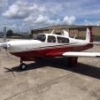Ovations Needed for Savvy Analysis!
-
Members Online
- EricJ
- TCC
- exM20K
- DanM20C
- Shawn26
- Gregarious
- IvanP
- ziggysanchez
- mluvara
- 00-Negative
- TangoTango
- Justin Schmidt
- Martin S.
- MikeOH
- Scooter
- Hank
- MattD89
- Mikey30V
- 67 m20F chump
- bluehighwayflyer
- Marc_B
- redbaron1982
- Bartman
- NickG
- AviH
- N205S
- eman1200
- Schllc
- Mooney-TN
- shawnd
- georgewdean1020
- Marvin Adams
- Frank B.
- A64Pilot
- CCAS
- Rwsavory
- hammdo
- PT20J
- EKoS


Recommended Posts
Join the conversation
You can post now and register later. If you have an account, sign in now to post with your account.